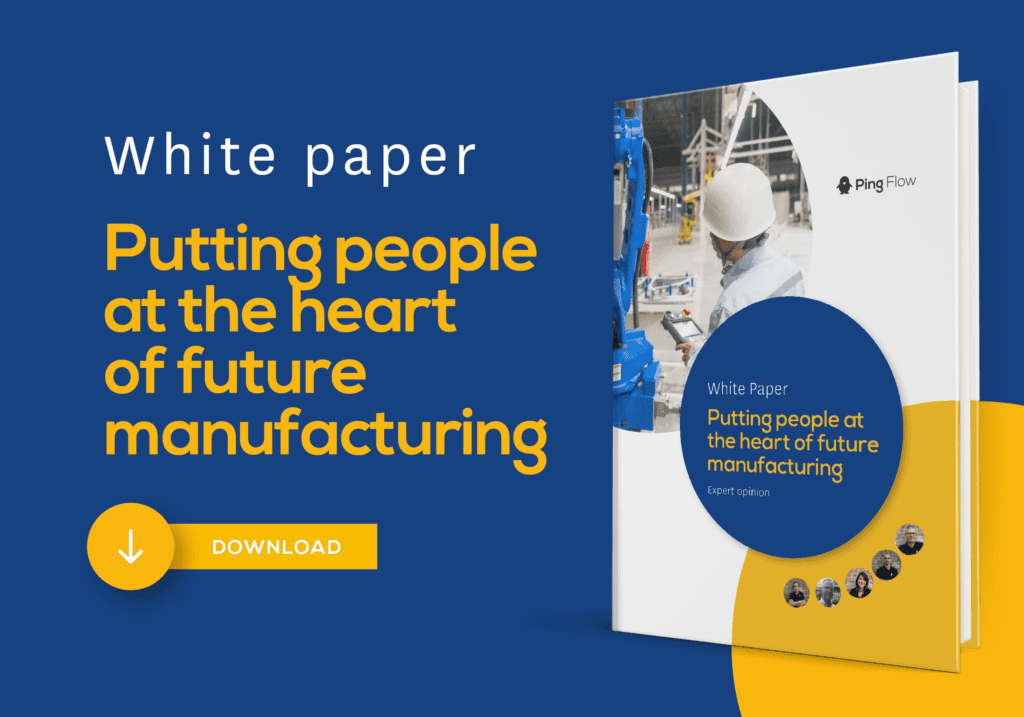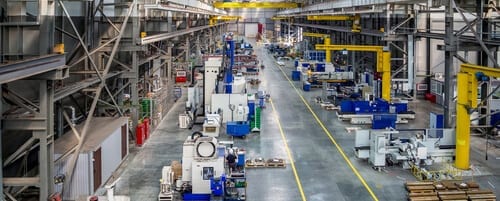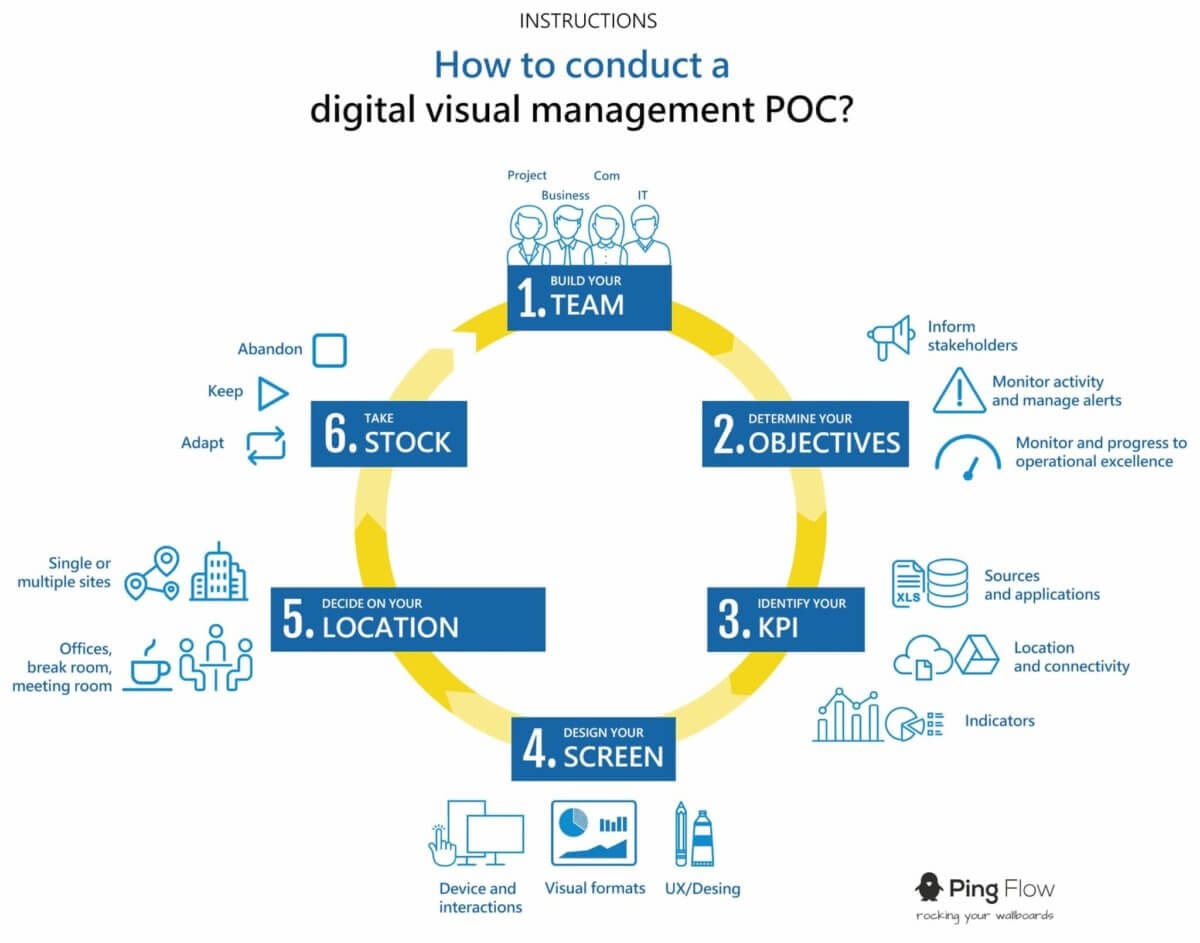89% of senior manufacturing managers put a premium on organisation, flexibility and reactivity as the main opportunities to develop their business over the next five years*. In all sectors – vehicle production, aeronautics or manufacturing, industrial manufacturers are always looking to optimise their processes. This is also the case for those in operational roles. Moments when people discuss numbers, essential for the effective operation of the factory, are centred around paper noticeboards. Can digital systems help to improve them, without affecting their use?
The transmission of information: A ritual vector for cooperation
 Industrial operators and workshop managers are already accustomed to certain rituals, such as conveying instructions during team changes. These moments of information sharing are essential for the operation of the production site, but also to maintain team cohesion. Indeed by favouring the sense of belonging, they bring operators together around common values and give meaning to their work. It is not about questioning their abilities. In fact, it is an opportunity to think about improving their skills.
Industrial operators and workshop managers are already accustomed to certain rituals, such as conveying instructions during team changes. These moments of information sharing are essential for the operation of the production site, but also to maintain team cohesion. Indeed by favouring the sense of belonging, they bring operators together around common values and give meaning to their work. It is not about questioning their abilities. In fact, it is an opportunity to think about improving their skills.
Today most industrial sites use paper display boards or whiteboards to share information. A method which has its limits: Repeated printing, managers needing preparation time, unreadable handwritten notes, unstructured, unscheduled. All negatives that reduce the effectiveness of team briefings and the emergence of collective intelligence.
The QRQC panel for industry briefings
 In this context, the use of digital efficiently saves time in many ways. Take for example digital QRQC (or SQCD) screens. The QRQC (Quick Response Quality Control) or SQCD (Safety-Quality-Cost-Delay) or SQPD (Safety-Quality-Performance/Production-Delay) are panels used to display useful information for production teams: KPIs, schedules, safety instructions. This data is shown in the form of graphs, tables or images. They are presented in an interface which is the same for everybody, understandable by all and updated in real time.
In this context, the use of digital efficiently saves time in many ways. Take for example digital QRQC (or SQCD) screens. The QRQC (Quick Response Quality Control) or SQCD (Safety-Quality-Cost-Delay) or SQPD (Safety-Quality-Performance/Production-Delay) are panels used to display useful information for production teams: KPIs, schedules, safety instructions. This data is shown in the form of graphs, tables or images. They are presented in an interface which is the same for everybody, understandable by all and updated in real time.
These dynamic screens are ideal for team briefings. And for good reason: they allow the team leader to communicate day-to-day performance through clear indicators, providing visibility of the activity to operators starting their shifts (objectives, products produced, scrap, incidents, etc.)
Displaying instructions at the edge of the screen is much more fluid and offers three main advantages. First, contrary to paper displays, the digital SQCD panel centralises and synchronises information in real time. Result: A reporting cycle which is much less time-consuming for the production director. And information is easy to update, to use (pivot tables) and is automatically archived as part of a quality process. And thanks to screens installed all over the facility, operational staff can easily access information without interrupting their work.
Digitising company rituals People centred
 For example, SQCD panels such as those offered by Pingflow facilitate the work of the team leader (data collection, organisation of information, preparation of instructions, etc.) and the understanding of operations staff during briefings.
For example, SQCD panels such as those offered by Pingflow facilitate the work of the team leader (data collection, organisation of information, preparation of instructions, etc.) and the understanding of operations staff during briefings.
The arrival of digital tools has thus been a considerable gain in efficiency for the manufacturing sector. But one should go about it in the right way: The objective of digitalisation is not to remove people from factories. On the contrary, technologies such as PingView aim to facilitate and reinforce human relationships within companies by facilitating exchange and the opportunity to comment on figures on screen. The proof: Briefings and meetings, so important for team cohesion continue to take place and are of better quality and are more convivial (interesting). These rituals gain simply in efficiency and coherence.
Far from being an abstract notion, the industry of the future is a real opportunity for industrial manufacturers to reorganise their processes, to significantly increase their competitiveness with technologies already available on the market.




